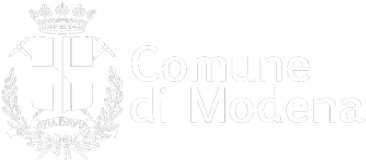Vignola
The Moretta variety of cherry in particular is a highly valued native cultivar and is now protected by a PGI (protected geographical indication) designation.
The area was occupied as early as the beginning of the Bronze Age by the Terramare culture, followed by the Etruscans and then the Gauls. The town’s name is Roman in origin and derives from the Latin word “vineola,” a reference to the cultivation of grapes that the Romans practiced in the soil of the Panaro River floodplain. The first document that mentions a settlement in the area dates to 826 CE and refers to the Nonantola Abbey. During the medieval period, under the dominion of the Bishop of Modena, Vignola developed as a defensive outpost. The Rocca Fortress has undergone a number of transformations over the centuries, and what we see today is the result of a 15th-century reconstruction by the Contrari family, who took possession of the area in 1247 and controlled it for two centuries before ceding the land to the Boncompagni nobles.
Why it's worth a trip
Vignola is fascinating both for the physical context in which it is situated, surrounded by fruit trees whose blossoms create a breathtaking sight during the Spring, and for its history and architecture. Vignola gave birth to such important historical figures as 16th-century architect Jacopo Barozzi, known as “Vignola,” and Ludovico Antonio Muratori, an Italian historian and scholar who spanned part of the 17th and the 18th centuries. The Rocca Fortress shouldn’t be missed, nor should the interior of Palazzo Contrari-Boncompagni and its wonderful spiral staircase by Barozzi.
Charming and lively, Vignola promises a pleasant introduction to local art, architecture, culture, food, and wine.
Sites you won't want to miss
The Rocca di Vignola Fortress
The splendid Rocca di Vignola Fortress, with its richly decorated interiors, is medieval in origin. According to historical evidence, it was built in the 8th century by the Abbot of Nonantola for the purposes of defending the Abbey’s lands. Over time, the Rocca underwent numerous alterations until, in the 15th century, it was transformed into a patrician residence for the Contrari family. In 1507, it passed to the family of Boncompagni Ludovisi who owned it until the middle of the 20th century. After additional restorations and reconstructions, the Rocca we see today is a majestic quadrilateral dominated by three towers and surrounded by a drawbridge with a moat. A climb to the top of the towers to enjoy the view of the city and surrounding countryside is almost mandatory! Among the rooms of the interior, the small Cappella dei Contrari is an authentic gem for its extraordinary well-preserved frescoes of stories from the life of Christ. We recommend a guided tour to get to know the details of this impressive site.
Palazzo Contrari-Boncompagni and the Barozzi Spiral Staircase
In Piazza dei Contrari, just across from the Rocca, is Palazzo Contrari-Boncompagni, better known as Palazzo Barozzi because of its delightful spiral staircase designed by the architect Jacopo Barozzi. A masterpiece of architecture of the 1500s, the staircase is a striking, self-supporting structure in the shape of a sinuous spiral with 106 steps. The Barozzi Staircase is fascinating for its architecture as well as for its artistic beauty.
Good things to eat
Here in Vignola, as throughout Modena Province, you can sample the best known local specialties, including PDO (protected designation of origin) Parmigiano-Reggiano cheese, zampone and cotechino (dishes made from a mixture of ground pork flavored with herbs and spices and stuffed into the hollowed-out lower-leg of a hog), prosciutto and other signature cured meats, fresh filled pastas, gnocco fritto (pastries something like a deep-fried dumpling), crescentine (a round, flat bread, flavored with spices and generally eaten with cold cuts, cheese, or spreads), Lambrusco wine, and PDO (protected designation of origin) and PGI (protected geographical indication) balsamic vinegar. Other area specialties include the renowned local pastry known as the Torta Barozzi, invented by the historic Pasticceria Gollini. Cherries in many forms, including preserved in hard spirits, are a standout here as well, and fruit-growing remains an important local industry.
The Caffé-Pasticceria Gollini, in the historic centre of Vignola since 1887, looks out from under the portico of an old building and it'is famous for the production of those cakes known as Torta Barozzi and Torta Muratori, so-called in honour of the architect, Jacopo Barozzi, known as Il Vignola, and the historian, Ludovico Antonio Muratori. The two cakes are made by hand in the old way, using absolutely genuine materials without colouring or preservatives, and their recipes have been handed down by the Gollini from generation to generation. Even today, the genuine recipe remains scrupulously hidden within the walls of the family workshop: The proportion of ingredients, the dough, the kneading and baking phases, and also the nature of the top quality products without chemical preservatives all remain top secre
Important events
Cherry Blossom Festival (end of March—beginning of April)
The Cherry Blossom Festival celebrates the spectacular cherry trees in bloom throughout the Panaro River Valley. This very popular event includes activities such as street markets and a parade of floats decorated with flowers.
Poesia Festival - Poetry Festival (August-November)
This literary festival brings together the communities of the Terre dei Castelli area to celebrate the magic of verse.
Nearby
The Percorso Sole (Sun Path)
The Percorso Sole (Sun Path) skirts the Panaro River for thirty-four kilometers of evocative scenery and historical markers. Walkers or bikers can follow the trail toward the Sassi di Roccamalatina Regional Park.
The Sassi di Roccamalatina Regional Park
Located in the Modenese Appennines, the Sassi di Roccamalatina Regional Park covers some 5,700 acres between the towns of Marano sul Panaro, Guiglia, and Zocca. The “Sassi,” the three rocky pinnacles that give the Park its name, can be seen in the interior.
Recognized by the European Union as a unique protected area, the Park conserves an enormous biodiversity of flora and fauna. Over eighty different bird species nest here, including peregrine falcons, and more than forty mammal species are found as well, among which are wolves, roe deer, fallow deer, badgers, foxes, stone martens, and porcupines. The Park is perfect for hiking and nature walks. Over 100 kilometers of trails and twelve different itineraries can be covered on foot, on horseback, or by mountain bike.
The Vignola to Modena Bike Path
Following the 19th-century train route that once connected Modena and Vignola, along which a few of the old railroad ties can still be seen, this picturesque bike path is ideal for outings alone or with the family.
The path’s eighteen kilometers run among old toll booths, farmhouses, courtyards, and gardens and cross the beautiful Modena countryside with its fields of alfalfa and corn alongside farmyards and well-tended plots of vegetables.
The Modena-Vignola cycle path will be closed in the Castelnuovo area, at the San Donnino motorway underpass, for 6 months due to the construction of the Complanarina.
The best time for a visit
The best time to visit Vignola is in the Spring when the cherry trees are in bloom (between March and April), a spectacle that will take your breath away. In these natural surroundings, enjoy the cheerful atmosphere of local celebrations and festivals. Fall, with its bright colors and mild temperatures, remains an excellent alternative.










